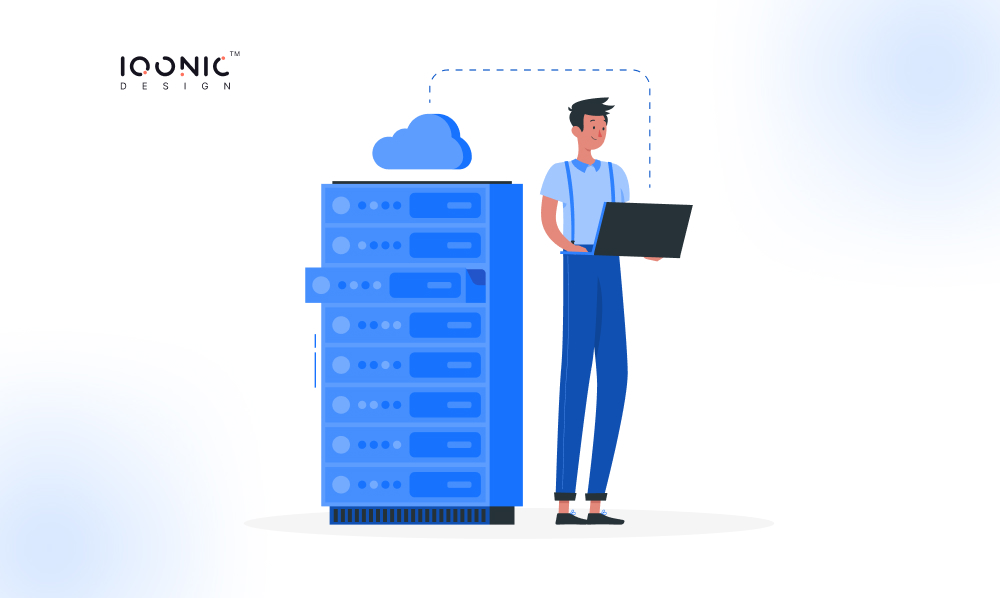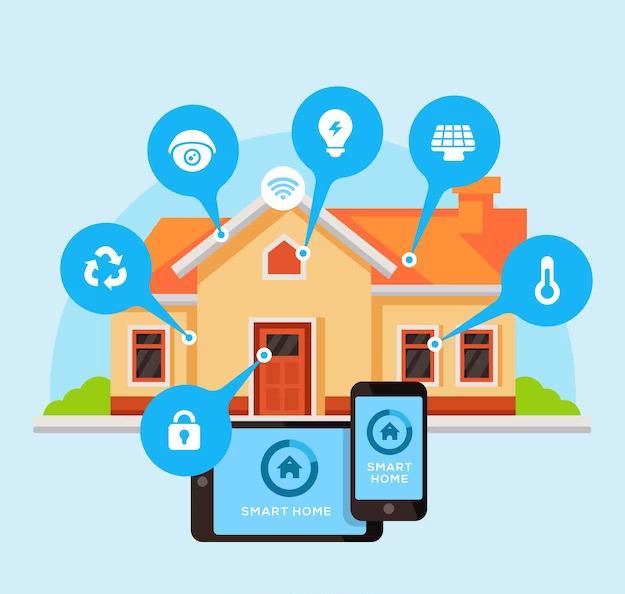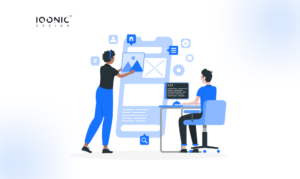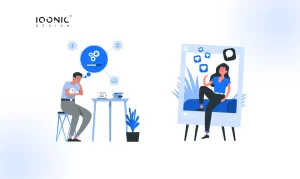
Building a Home Service App: Costs, Features, and Success Strategies
In recent years, we’ve witnessed an extraordinary surge in the popularity of home service apps. These digital platforms have transformed how we access services, making our lives easier and more convenient. Whether booking a plumber, scheduling a house cleaning, or finding a reliable electrician, home service apps have become the go-to solution for homeowners seeking assistance.
This blog will guide you into the home service app development world. We will explore the fundamental features that make these apps successful, dissect developers’ challenges, and delve into the financial aspects.
The Current Landscape of Home Service Apps

The landscape of home service apps is vibrant and evolving rapidly. Here’s an overview:
1. Diverse Service Offerings:
Home service apps cover various services, from home repairs and maintenance to beauty and wellness treatments.
2. Market Size:
The global home service app market has grown significantly, driven by increasing consumer demand for convenience.
3. Key Players:
Several prominent apps have carved their niche in this space:
Uber for X:
Apps like TaskRabbit and Thumbtack offer a marketplace for various services, connecting users with local service providers.
Home Cleaning:
Food Delivery Apps:
Success Stories:
1. Uber:
Uber’s entry into the home service industry with Uber for Business has demonstrated how a tech giant can diversify its services. It’s a testament to the potential of this market.
2. Thumbtack:
Thumbtack’s success story revolves around its user-friendly platform, seamlessly connecting service professionals with clients. It serves as an inspiration for startups entering this domain.
3. TaskRabbit:
Acquired by IKEA, TaskRabbit has grown to be a trusted platform for odd jobs and home services, showing the significance of reliability and trust in this industry.
The home service app landscape continues to flourish, offering opportunities for innovation and growth in various service sectors.
Key Features of Home Service Apps
Home service apps are successful when they provide a seamless experience for users and service providers. Here are the essential features users expect:
1. User Profiles:
- Users should be able to create and manage profiles with their personal information and service preferences.
Profiles help in building trust between users and service providers.
2. Service Provider Listings:
A comprehensive directory of service providers, categorized by services offered and location, makes it easy for users to find the right professional.
3. Booking and Scheduling:
Intuitive booking systems with real-time availability calendars allow users to schedule appointments conveniently.
Users can specify the service’s date, time, and location.
4. Reviews and Ratings:
- Transparent feedback mechanisms enable users to read reviews and ratings of service providers from previous customers.
- This builds confidence and helps users make informed decisions.
5. Payment Integration:
Secure payment gateways should be integrated to facilitate cashless transactions.
Users should have options for various payment methods, including credit cards, digital wallets, and even in-app wallets.
6. Real-Time Tracking:
Users appreciate the ability to track the arrival and progress of the service provider using GPS or location tracking.
7. Instant Messaging:
In-app messaging allows users and service providers to communicate directly for clarifications or updates regarding the service.
8. Notifications and Alerts:
9. Emergency Support:
In urgent situations, users should have access to emergency support or helplines.
10. Multi-Platform Accessibility:
A responsive design or mobile app availability ensures users can access the service on various devices, including smartphones and tablets.
These key features collectively enhance the user experience and contribute to the success of home service apps by making the process of finding, booking, and receiving services hassle-free and efficient.
Challenges in Home Service App Development
Developing home service apps comes with its share of challenges. Here are some common ones:
1. Scalability:
2. User Trust:
Building trust between users and service providers is a challenge. Users must have confidence in the professionals they hire through the app.
3. Data Security:
Handling sensitive user data, including personal and payment information, requires robust security measures to protect against data breaches.
4. Quality Assurance:
Maintaining service quality is paramount. Ensuring that service providers meet user expectations consistently can be a challenge.
5. Geographical Coverage:
Expanding to new regions and ensuring a consistent quality of service across various locations can be logistically challenging.
6. Regulatory Compliance:
7. Technological Integration:
Seamlessly integrating with third-party services (e.g., payment gateways, mapping APIs) can be technically challenging.
8. User Experience:
Creating an intuitive, user-friendly interface that accommodates various user preferences and needs can be a design and development challenge.
9. Competitive Market:
The home service app market is competitive. Standing out and offering unique value can be a hurdle.
10. Customer Support:
These challenges are part of the journey of in-home service app development. Successful apps navigate these hurdles to deliver exceptional user experiences and drive growth.
Cost Factors in App Development

Developing a home service app involves several cost components. Let’s break them down:
1. Development Costs:
Backend Development:
Configuring servers, databases, and APIs.
Frontend Development:
App Platforms:
2. Design Costs:
UI/UX Design
Designing the app’s look, feel, and user flow.
Graphic Design:
Creating logos, icons, and visuals.
3. Testing Costs:
Quality Assurance:
Device and OS Testing:
4. Marketing Costs:
User Acquisition:
App Store Optimization (ASO):
Content Creation:
Developing marketing materials and content.
5. Maintenance Costs:
Updates and Enhancements:
Server and Hosting:
Maintaining the backend infrastructure.
Providing Customer Support:
Addressing User Queries.
6. Operational Costs:
Hosting and Cloud Services:
Expenses for server hosting and cloud resources.
Payment Processing Fees:
Charges associated with handling payments.
Legal and Compliance:
Costs for legal consultations and compliance with regulations.
7. Security Costs:
- Protecting user data with security measures.
- Continual assessment of security vulnerabilities.
8. Contingency Budget:
Setting aside funds for unexpected expenses or changes in project scope.
Understanding these cost factors is essential for budgeting and ensuring your home service app’s successful development and long-term sustainability.
Ways to Control Development Costs
For entrepreneurs and developers looking to manage costs effectively during home service app development, consider these strategies:
1. MVP Development:
- Start with a Minimal Viable Product (MVP) to test your app’s core features with a limited budget.
- Use real-world feedback to refine the app.
2. Outsourcing:
Consider outsourcing non-core tasks like design, development, or QA to cost-effective third-party experts or agencies.
This can reduce labor costs and speed up development.
3. Open-Source Tools:
Leverage open-source software and libraries for components like databases, frameworks, and UI elements.
This can save on licensing fees and development time.
4. Agile Development:
- Adopt an Agile development methodology to prioritize features and adapt to changes efficiently.
- It allows you to focus on high-value features and adjust the course.
5. Cross-Platform Development:
Build your app using cross-platform development frameworks like React Native or Flutter.
This approach reduces the need for separate iOS and Android development teams.
6. Iterative Development:
Rather than aiming for a fully-featured app from the start, develop iteratively, adding features as your app gains traction and revenue.
7. Cloud Services:
- Utilize scalable cloud services to avoid upfront infrastructure costs.
- Pay-as-you-go models can align costs with app usage.
8. Cost Monitoring Tools:
Implement cost-monitoring tools to track and manage your development expenses effectively.
Adopting these cost-effective strategies allows you to optimize your budget, increase efficiency, and bring your home service app to market without breaking the bank.
Conclusion
In the dynamic home service app development world, two fundamental pillars stand tall: cost and features. Balancing these elements is pivotal for success. Here are the key takeaways:
1. Cost Efficiency:
Managing development costs wisely through strategies like MVP, outsourcing, and open-source tools can make or break your project.
2. Essential Features:
Incorporate user profiles, reviews, scheduling, payment integration, and more to meet user expectations.
3. User Trust:
4. Flexibility:
Embrace agility, iterate, and adapt to changing market demands.
By understanding the intricacies of these factors, you’re equipped to navigate the home service app landscape and create a robust, cost-effective, and user-friendly solution.
START NOW!
IQonic Designs is your trusted IT service agency, specializing in offering comprehensive Flutter app development services to startups. Here’s a breakdown of the key benefits you’ll enjoy:
Accelerated Development:
IQonic Designs aims to speed up the process of turning startup ideas into functional apps using Flutter, a popular framework for building cross-platform apps.
Cost-Effective:
We emphasize our budget-friendly services, allowing startups to save money while still receiving a high-quality app.
UI/UX Design:
Our team focuses on creating visually appealing and user-friendly interfaces to engage and delight users, recognizing the importance of design in app success.
Cross-Platform Compatibility:
By leveraging Flutter’s cross-platform capabilities, we enable startups to target both iOS and Android users simultaneously, potentially expanding their user base.
Hosting and Deployment:
Ongoing Support and Maintenance:
Our commitment to ongoing excellence means we provide support and maintenance services to ensure the app stays up-to-date and performs well as technology evolves.
Join forces with IQonic Designs today, your reliable IT service agency, and let’s transform your visionary startup ideas into reality. Contact us now to experience the difference.






